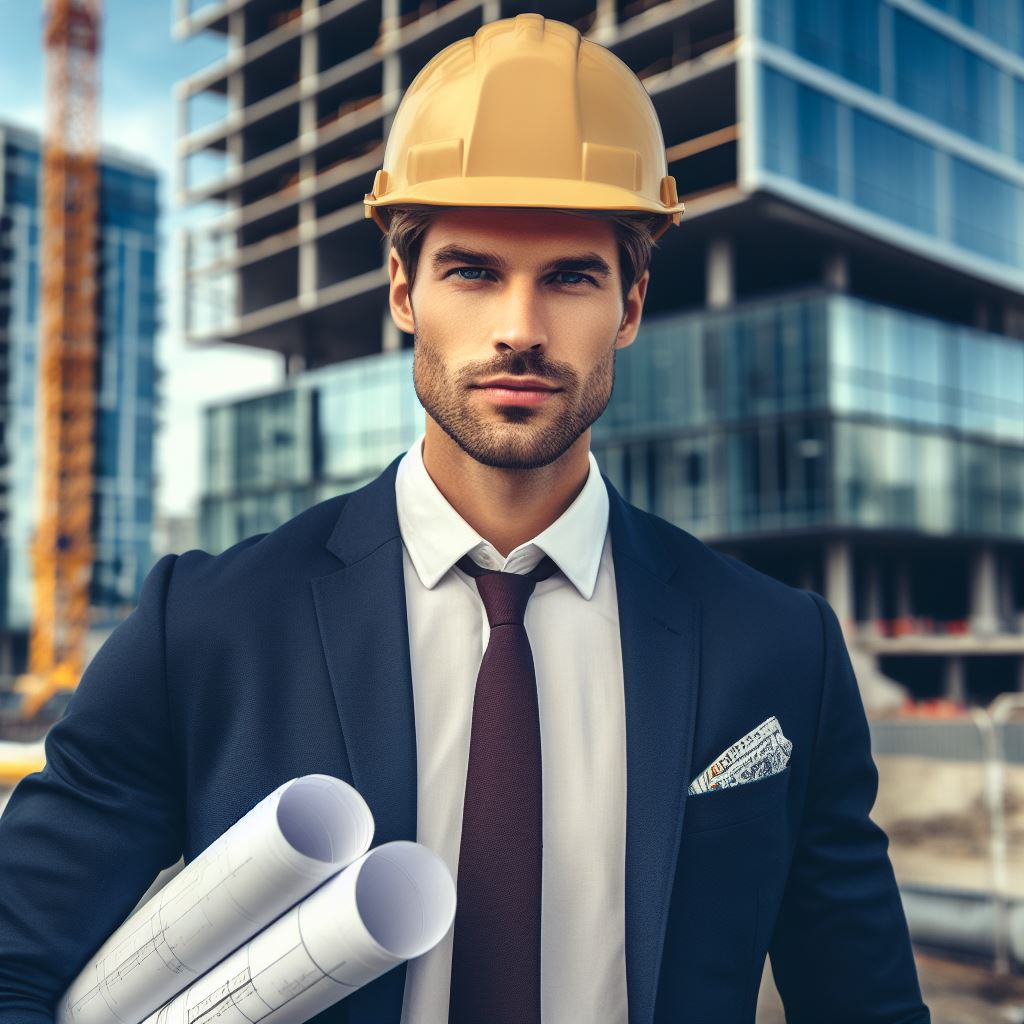Introduction
In the world of urban development, architects play a crucial role in shaping the cities we live in.
They are responsible for designing and creating the buildings and structures that make up our urban landscapes.
Architects have the power to transform and improve the functionality, aesthetics, and sustainability of our cities.
Brief explanation of the topic
Urban development refers to the growth and improvement of cities, including the planning and construction of residential, commercial, and public spaces.
Architects are key players in this process as they design buildings and infrastructure that meet the needs of the community while also considering factors such as sustainability, accessibility, and urban planning.
Importance of architects in urban development
Architects are vital in urban development as they bring artistic vision and technical expertise to the planning and design of cities.
They have the ability to create innovative and sustainable buildings that enhance the quality of life for residents and contribute to the overall aesthetic appeal of the city.
Architects also work closely with urban planners and engineers to ensure that their designs align with the goals and regulations of the city.
Furthermore, architects are responsible for creating spaces that are functional, safe, and inclusive.
They consider factors such as accessibility for people with disabilities, efficient use of space, and the integration of green spaces and public areas into the urban fabric.
By doing so, architects play a significant role in creating cities that are livable, sustainable, and visually appealing.
Therefore, architects are essential in urban development as they bring creativity, expertise, and a holistic approach to the design of buildings and infrastructure.
Their work greatly impacts the functionality, aesthetics, and sustainability of our cities, making them invaluable in shaping the urban landscapes we inhabit.
Overview of UK urban development
The United Kingdom has experienced significant urban development over the years.
With the rise in population and urbanization, cities have become the focal points of economic, social, and cultural activities.
Urban areas play a crucial role in shaping the nation’s identity and contribute to its overall development.
Present State of Urban Areas in the UK
Currently, many cities in the UK face challenges related to infrastructural development, housing, and urban sprawl.
Rapid urbanization has led to overcrowding, increased pollution levels, inadequate transportation, and limited access to green spaces.
These issues have negatively affected the quality of life for residents in urban areas.
Need for Sustainable and Well-Designed Urban Spaces
To address the challenges and create livable cities, there is a growing need for sustainable and well-designed urban spaces.
Architects play a vital role in this process as they possess the skills and expertise to develop sustainable infrastructure that meets the needs of the present and future generations.
Sustainable urban development focuses on creating environmentally friendly, socially inclusive, and economically viable cities.
Architects can incorporate green building techniques, renewable energy sources, and efficient transportation systems into their designs.
By integrating these elements, urban areas can minimize their ecological footprint and promote a healthier lifestyle for their inhabitants.
Moreover, well-designed urban spaces contribute to the overall aesthetic appeal of a city.
Architectural landmarks and iconic structures define a city’s identity and attract tourists, boosting the local economy.
These spaces should be planned in a way that encourages social interaction and community engagement, promoting a sense of belonging among residents.
Challenges and Opportunities in Urban Development
Urban development in the UK faces several challenges that need to be addressed to ensure sustainable growth.
Limited availability of land, especially in already crowded cities, poses a significant challenge to urban planners and architects.
They need to find innovative ways to utilize small or underutilized spaces effectively.
Another challenge is the need to strike a balance between preserving historical and cultural heritage while embracing modernization.
Architects must design new structures that complement the existing urban fabric, ensuring the seamless integration of the old and the new.
However, with these challenges come opportunities. Urban development projects create employment opportunities and stimulate economic growth.
Architects and construction workers contribute to job creation, driving local economies forward.
Additionally, urban development projects provide an opportunity to address social inequality and improve living conditions.
By focusing on affordable housing, public amenities, and accessible infrastructure, architects have the chance to create more inclusive cities that cater to the needs of all citizens.
In short, architects play a crucial role in UK urban development.
They have the responsibility to create sustainable, well-designed, and inclusive spaces that enhance the quality of life for urban dwellers.
By addressing the challenges and embracing the opportunities, architects can transform the UK’s urban areas into vibrant and thriving communities.
Personalized UK Career Consulting
Receive tailored career guidance designed just for you. Get actionable steps and expert support to boost your career in 1-3 days. Take control of your career now.
Get StartedRead: The Future of Architecture in the UK Explored
Role of architects in urban development
In the ever-evolving landscape of urban development in the UK, architects play a vital role in shaping and designing the cities we live in.
Their responsibilities go beyond just creating aesthetically pleasing buildings; they have a significant impact on the overall urban environment.
Here, we will delve into the key responsibilities of architects and how they collaborate with other professionals to create sustainable and functional urban landscapes.
Key Responsibilities of Architects
- Designing buildings that meet the needs of the community while complying with regulations and sustainability standards.
- Creating functional and visually appealing spaces that enhance the urban environment.
- Considering factors such as accessibility, safety, and energy efficiency in their designs.
- Collaborating with clients to understand their vision and translating it into architectural drawings and plans.
- Space planning to optimize land use and create efficient urban layouts.
- Ensuring the structural integrity of buildings through thorough analysis and engineering principles.
- Incorporating sustainable design practices to minimize the environmental impact of urban development.
- Keeping up with the latest construction materials and technologies to innovate in their designs.
Architects’ Role in Shaping Urban Landscapes
The influence architects have on shaping urban landscapes cannot be overstated.
They contribute to transforming cities into vibrant, sustainable, and livable spaces.
By designing iconic buildings and structures, architects create landmarks that define the identity of a city.
Examples such as London’s Shard and the Gherkin have become synonymous with the city’s skyline, attracting tourists and contributing to the local economy.
Moreover, architects play a critical role in revitalizing and regenerating urban areas.
By repurposing old buildings and enhancing public spaces, architects breathe new life into neglected neighborhoods.
Their ability to envision and transform spaces ultimately contributes to the economic and social growth of these areas.
The Collaborative Nature of Architects’ Work
Architects rarely work in isolation; their projects require collaboration with a diverse range of professionals.
From engineers and contractors to urban planners and interior designers, architects collaborate with various experts to bring their designs to life.
Urban development projects typically involve interdisciplinary teamwork, where architects work closely with stakeholders to ensure that the final design meets the needs of the community.
This collaborative approach helps architects incorporate different perspectives and expertise, resulting in more holistic and sustainable urban solutions.
Additionally, architects collaborate with local authorities and city planners to ensure that their designs align with the long-term vision and master plans for the city.
By working together, they create cohesive urban environments that promote connectivity, inclusivity, and a high quality of life.
Architects have a multifaceted role in the urban development of the UK.
Their responsibilities encompass designing buildings that are visually appealing, functional, and sustainable.
Additionally, they contribute to shaping urban landscapes and revitalizing neglected areas.
Through collaboration with professionals from various fields, architects utilize their expertise to create vibrant and inclusive cities that meet the needs of the community.
Their work ultimately plays a crucial role in shaping the future of urban development in the UK.
Read: Top UK Architecture Schools: A Detailed Guide
Architectural design considerations in urban development
In urban development, architects play a vital role in shaping the design of buildings and public spaces.
Architectural design considerations are crucial for creating functional and visually appealing urban environments.
- Site analysis and context: Architects carefully assess the site’s characteristics, such as topography, climate, and existing infrastructure.
- Historical and cultural preservation: They take into account the heritage and cultural significance of the area.
- Sustainability and environmental impact: Architects prioritize sustainable construction materials, energy efficiency, and reducing waste.
- Accessibility and inclusivity: They ensure that urban spaces are designed to accommodate people of all abilities.
Designing urban spaces
- Functionality: Architects consider how the urban space will be used and design it to suit the intended purpose.
- User experience: They focus on creating spaces that are comfortable, engaging, and encourage social interactions.
- Visual aesthetics: Architects strive to create aesthetically pleasing environments that enhance the quality of life.
Practicality is a key aspect of architectural design in urban development.
Architects must consider factors such as construction costs, maintenance requirements, and the longevity of the design.
- Construction costs: They balance the project’s budget with the desired design elements.
- Maintenance requirements: Architects aim to create spaces that are easy to maintain and durable.
- Longevity: They consider the long-term impact of the design and its adaptability to future needs.
Furthermore, architects need to address the pressing issue of urbanization and its effects on communities.
Your Dream Job Starts with a Perfect CV
Get a tailored CV and cover letter that captures your unique strengths and stands out in your industry. Let us help you make an unforgettable first impression.
Get StartedUrban environments should promote social cohesion and respond to the diverse needs of the population.
- Community engagement: Architects involve local communities in the design process to ensure their voices are heard.
- Social infrastructure: They integrate spaces for social activities and community gatherings.
- Mixed-use development: Architects strive to create urban spaces that combine residential, commercial, and recreational areas.
In essence, architects play a vital role in shaping urban development by considering various factors.
They aim to create sustainable, inclusive, and aesthetically pleasing environments that prioritize functionality and user experience.
Read: UK Architects: Education Path & Qualifications

Case studies of successful urban development projects
- The High Line in London transformed an abandoned railway into a green oasis, attracting locals and tourists alike.
- The Gorbals in Glasgow underwent a major regeneration, resulting in improved housing, infrastructure, and community facilities.
- The Bullring in Birmingham, known for its futuristic design, revitalized the city center and boosted the local economy.
- The King’s Cross redevelopment in London transformed former industrial land into a vibrant mixed-use neighborhood.
Notable Architectural Contributions to UK Urban Development
- The Shard in London, designed by Renzo Piano, not only redefined the city skyline but also provided space for offices, apartments, and a hotel.
- The Sage Gateshead in Newcastle, an iconic music venue designed by Foster + Partners, brought cultural and economic growth to the area.
- The Library of Birmingham, designed by Mecanoo, acts as a cultural hub and provides a stunning architectural landmark in the city.
- The Scottish Parliament building in Edinburgh, designed by Enric Miralles and Benedetta Tagliabue, showcases a unique and modern approach to civic architecture.
Positive Impact of Urban Development Projects on Communities
- Improved infrastructure and housing have enhanced the quality of life for residents in urban areas.
- Vibrant public spaces created by these projects foster a sense of community and social interaction.
- Economic growth and job opportunities are generated through increased tourism and commercial development.
- Revitalized neighborhoods instill pride and a renewed sense of identity for residents, improving overall well-being.
Innovative and Sustainable Approaches Employed by Architects
- Architects are incorporating green spaces and sustainable materials into their designs, promoting environmental sustainability.
- Mixed-use developments are gaining popularity, reducing the need for commuting and promoting walkability.
- Adaptive reuse of old buildings and structures preserves historical and cultural heritage while reducing waste.
- Emphasis is put on energy efficiency, with architects incorporating renewable energy sources into their designs.
In fact, architects play a vital role in UK urban development by creating innovative and sustainable designs.
Through successful case studies such as The High Line and The Bullring, architects have transformed abandoned spaces into thriving communities with positive impacts on residents and the economy.
Notable contributions by architects like Renzo Piano, Foster + Partners, Mecanoo, and Miralles and Tagliabue have also reshaped the UK’s urban landscape with iconic landmarks.
By employing sustainable approaches, architects are creating a greener and more resilient future for urban areas across the country.
Read: Day in the Life of a UK CAD Technician
Challenges and Future Prospects
Architects play a crucial role in urban development in the UK.
However, they face several challenges in their work, which can hinder the smooth progress of projects.
These challenges include:
- Limited space and land availability in urban areas
- Increasing population and demand for housing
- Tight budgets and financial constraints
- Complex planning regulations and approval processes
- Resistance from local communities and stakeholders
Despite these challenges, architects need to continually learn and adapt to the changing urban needs. Continuous learning is crucial because:
- It enables architects to keep up with the latest design trends and technologies
- It improves their understanding of sustainability, energy efficiency, and environmental issues.
- It helps them develop innovative solutions for urban challenges.
- It allows them to collaborate effectively with other professionals, such as engineers and urban planners.
- It enhances their ability to integrate social and cultural aspects into their designs.
Furthermore, architects who can adapt to changing urban needs will find numerous opportunities in future urban development projects. Some of these opportunities include:
- Creating sustainable and eco-friendly buildings that minimize the impact on the environment.
- Designing mixed-use developments that combine residential, commercial, and recreational spaces.
- Transforming derelict and underutilized areas into vibrant and livable neighborhoods.
- Integrating smart technologies to improve the quality of life and efficiency of urban spaces.
- Developing affordable and social housing solutions to address the housing crisis.
Moreover, architects can play a significant role in shaping the future of urban development by collaborating with communities and stakeholders.
By actively involving them in the design and decision-making processes, architects can create inclusive and people-centric urban spaces.
In general, architects face several challenges in urban development projects, including limited space, tight budgets, and complex regulations.
However, by continuously learning and adapting to changing urban needs, architects can unlock numerous opportunities for themselves in future projects.
By incorporating sustainable and innovative design solutions, architects can contribute to the creation of livable and sustainable cities in the UK.
Find Out More: The Future of Mech Engineering in the UK
Conclusion
Architects play a significant and crucial role in the urban development of the UK.
They are responsible for designing and creating the buildings and structures that shape our cities and communities.
Their expertise and creativity contribute to the functionality, aesthetics, and sustainability of urban spaces.
Architects understand the needs and aspirations of the people living in cities, and they strive to create environments that enhance the quality of life.
It is important for readers to appreciate and support the work of architects as they contribute to the growth and transformation of our cities.
By recognizing and valuing their contributions, we can participate in creating vibrant, dynamic, and inclusive urban spaces.
Let us acknowledge the vital role architects play in shaping our cities and continue to support their efforts in building a better future for all.
[E-Book for Sale]
500 Cutting-Edge Tech Startup Ideas for 2024 & 2025: Innovate, Create, Dominate
$19.99 • 500 Tech Startup Ideas • 62 pages
You will get inspired with 500 innovative tech startup ideas for 2024 and 2025, complete with concise descriptions to help you kickstart your entrepreneurial journey in AI, Blockchain, IoT, Fintech, and AR/VR.




